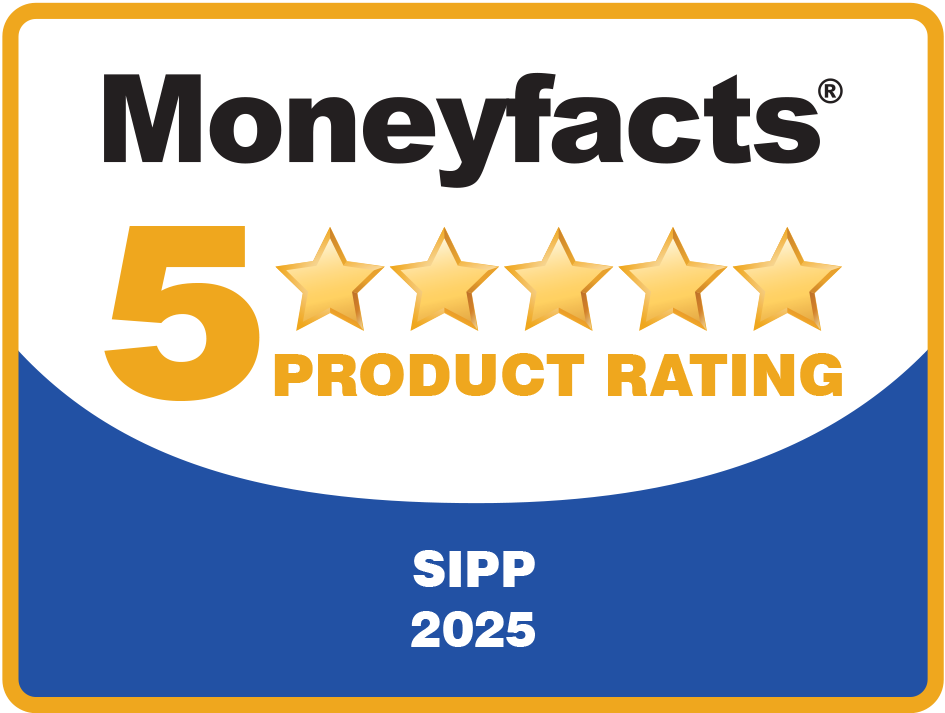10 common technical questions you ask us about SIPPs – and all the answers
As a bespoke SIPP provider, we are used to being asked a wide range of questions – not just about our own SIPP, but matters relating to pensions in general. While some clients have more straightforward needs that we service, we are also used to dealing with more complex matters around SIPPs.
We often say to our advisers that they can treat us as an extension of their technical team should they need any assistance on SIPPs – and more often than not this is an offer that they take up!
With the end of the tax year just behind us (as of the time of writing) we have seen an increase in the technical questions we are being asked on a day-to-day basis.
Many of the regular queries you ask us are answered in our monthly newsletters. You can read some of our previous posts here:
- 3 useful examples that compare the costs of a bespoke SIPP
- 6 questions you ask us that we say “no” to
- Consumer Duty: here are answers to 10 common questions about the Duty and IPM
- The 10 most frequently-asked questions about IPM and our SIPP
This time around, we are going to cover the top 10 technical questions you have asked us over the last few months.
1. How much can a client’s employer contribute?
Given this is being written in April, we have been inundated with contribution-related queries over the past few weeks. While we can answer factual information based on HMRC guidelines, the answer to some questions will very much depend on an individual’s circumstances outside the SIPP.
One such question is: “How much can my client’s employer contribute?”
For some time now, a SIPP provider has not been required to collect evidence of earnings or record the level of Annual Allowance a client may have. Furthermore, as tax relief on employer contributions is related to the company that makes the payment, there is no link to earnings and the level of payment as there is on a personal contribution.
Consequently, while IPM will ask advisers to ensure they have sufficient Annual Allowance to make the payment, we can’t answer this question or whether any payment will apply for Corporation Tax relief. This would be down to the company accountant to ensure that any payment meets the “wholly and exclusively” rule.
You can find more information about this on this page of the pensions tax manual.
2. Does IPM require a wet signature on paperwork?
An oldie, but a goldie!
We now offer the ability for our paperwork to be completed using an electronic signature (note that IPM must create the DocuSign envelope to ensure that we have the certificate of completion for our files).
Advisers can request that we set up a DocuSign envelope by contacting us here or by logging onto their IPM online access and generating a DocuSign envelope themselves under the “Online Forms” tab.
We can still accept our forms in the traditional way, although we will require the original form with a wet signature for our file.
3. Does IPM facilitate “scheme pays”?
The short answer is yes.
“Scheme pays” allows for a pension scheme to pay an Annual Allowance charge. This has the benefit that any charge due can be paid from the SIPP as opposed to an individual paying personally.
In the first instance, the adviser or client should contact IPM requesting that the SIPP facilitates “scheme pays” and we will go through the process from there.
4. What does IPM need to make an investment?
The answer to this question varies depending on the nature of the investment being made. However, in general, for standard investments, we will require the following:
- An instruction from the appointed Investment Advisor to the SIPP (usually the appointed financial adviser). Where there is no Investment Advisor, we must have an instruction from the SIPP beneficiary.
- The appropriate paperwork to make the investment. This should be completed by the adviser or client where appropriate (including information such as investment selection, agency details, and so on). IPM is happy to complete any areas relating to the SIPP, including trustee details, trustee bank account information, and signatures on behalf of the trustee.
- Sufficient money in the trustee bank account to facilitate the investment.
For investments such as commercial property, there is a separate set of requirements to complete, including our property purchase questionnaire.
5. Can the IPM SIPP hold non-standard assets?
As a bespoke SIPP provider, we will consider requests to accept non-standard assets into our Scheme. This is not to say we are happy to receive large numbers of these types of investments!
We appreciate there are certain circumstances whereby a non-standard asset would form part of an IPM SIPP. For example, this could include a transfer-in of a currently suspended listed investment that forms a small part of a larger, overall SIPP.
Another example would be an investment into a hedge fund which may be quarterly dealing where the client is someone with sufficient experience in these types of investments (for example, they may work for the fund manager in question).
Even an NS&I one-year bond would count as a non-standard asset based on the criteria of the Financial Conduct Authority (FCA)!
Regardless of the request, we are required to carry out a full assessment of the investment in question. For this, we can make an additional charge depending on what the investment is as it can be a time-consuming exercise to satisfy the FCA’s requirements.
With the above said, we still would say “no” to most non-standard assets.
We have also never accepted some of the types of investment that have been well-reported over the years to cause investors serious harm.
6. Where can I hold cash in the IPM SIPP?
With interest rates higher than they have been for some time, we are regularly asked about the options for holding cash in the SIPP.
All monies in and out of the SIPP initially must pass through the trustee bank account with Metro Bank, for reconciliation purposes. The rate of interest payable on this account can vary (click here for the latest rate). We do not insist on a minimum amount being held in this account.
We recently wrote about the other options for holding cash in the IPM SIPP in more detail.
7. Can a loan be made by an IPM SIPP?
The answer is no.
While loans to unconnected third parties are, in theory, possible under HMRC guidelines, connected loans from SIPPs are deemed unauthorised payments and will be subject to a tax charge.
That said, from a trustee perspective we would also have concerns around the security of making a loan to an unconnected third party. Why would you lend money to a third party you are not familiar with? We believe this has the potential to create bigger issues for the SIPP in the future.
8. Can the IPM SIPP purchase unquoted shares?
This is another no from us.
There are several reasons for this, including the fact that the administrative responsibilities for investing in such assets are not something we are comfortable with.
For example, if IPM were required to value the SIPP to pay a pension commencement lump sum, how would we value unquoted shares?
While there are companies that offer this service, valuing limited companies can be expensive and complex. We also have concerns as to how IPM would dispose of the shares if we were ever required to, as there is often not a large market of potential buyers for shares in an unquoted company.
Moreover, the FCA’s regulations on SIPP investments say these must fall into a category of either “standard” or “non-standard”. For a SIPP operator to invest in non-standard assets, there are onerous initial and ongoing assessment requirements they are expected to undertake.
Our understanding is that many SIPP providers hold the same opinion as IPM when it comes to investing in unquoted shares.
9. How do death benefit nominations work?
At the time of establishing a SIPP, we ask all clients to complete a nomination of beneficiaries form. This is used by IPM in the event of a client’s death to help decide how death benefits should be paid.
Like any assets in a trust, pension benefits are held outside of an individual’s estate. This is why the way death benefits are distributed is dealt with differently to an individual’s other assets, and does not count towards Inheritance Tax.
IPM, as trustee, is the legal owner of the Scheme assets that are held for the client’s benefit. As such, in the event of death, we need to decide who should receive the benefits. The death benefit nomination is our first port of call when making this decision and this is why it is so important that this is kept up to date.
How death benefits from SIPPs are treated for tax purposes depends on the age of the member at the time of death. As of April 2024:
- If an individual were to die before age 75, any distribution from the SIPP can be made to a nominated beneficiary tax-free.
- If death occurs after the age of 75, benefits can still be paid, although these will be taxed at the recipient’s marginal tax rate.
Once the benefits have been designated (the trustees have formally decided who is to receive them), there is no requirement for all the benefits to be withdrawn from the SIPP. Many beneficaries leave monies or assets within the SIPP structure, now designated for their benefit. Alongside their financial adviser, they then plan as and when to draw from the SIPP.
This offers plenty of planning opportunities for financial advisers. This useful case study highlights how a SIPP can be used to pass on a commercial property to different generations of the same family.
10. What happens if a nominated beneficiary pre-deceases the Scheme member?
This scenario highlights why it is important to ensure that any nominations made to a pension provider are regularly reviewed and kept up to date.
This is a scenario that we do see. We recently had a situation whereby a member had passed away, but we only had a nomination from 2005 on file. This form nominated his spouse to receive his benefits but, sadly, she had passed away some years earlier.
It is important to remember that the nomination made by members to pension trustees is not binding, as this gives us the flexibility to designate benefits to someone other than the individual(s) the deceased has nominated for situations like this.
When the death of a scheme member occurs, we will always liaise with the appointed financial adviser to ensure that we have all the information we need to make our decision.
Where we have no surviving nominee to designate benefits to, we may look towards the will or other arrangements the member had put in place to ensure that we can fulfil their wishes regarding the pension benefits.
For example, we may designate the benefits to children, grandchildren, other family members or charities.
Get in touch
If you want to have a chat about the potential of SIPPs for your clients, or any other aspects of pension planning, please contact us.
Email info@ipm-pensions.co.uk or call 01438 747151.



